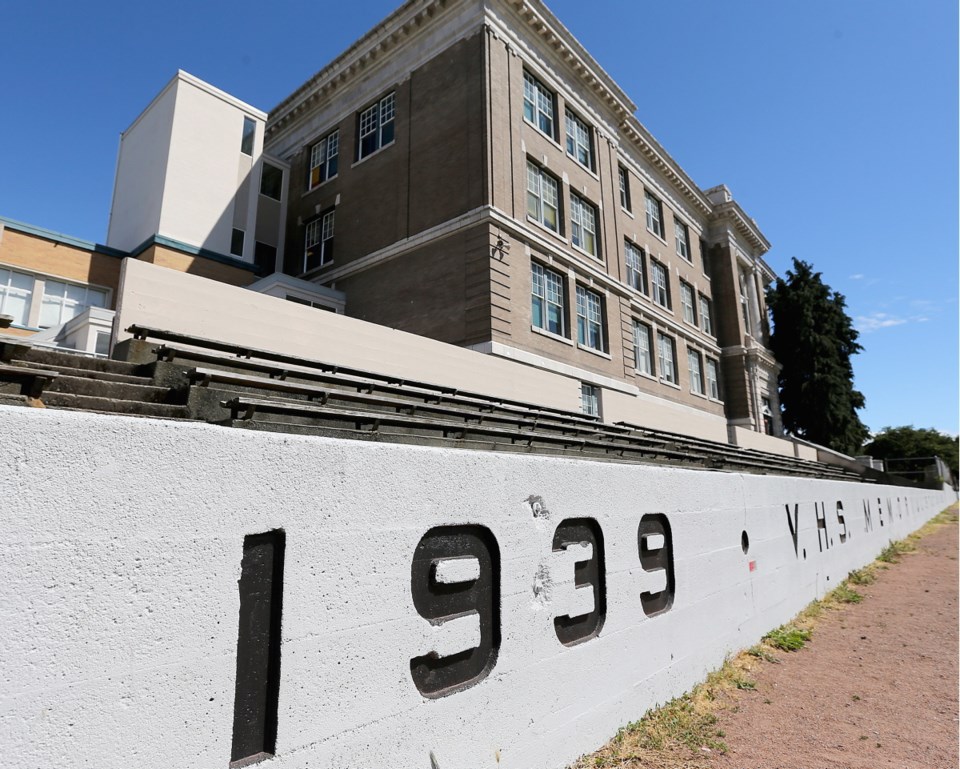The difficult decision as to whether to renovate an existing school or to admit “that was then and this is now” and build a new 21st-century school will face many boards of education.
Yes, comparative costs will be a major factor, but the problem facing school trustees is only partly about cost. Educationally, the more significant problem is that B.C. school buildings, with an average age of 20 to 30 years and in some cases much older, no longer recognize what has been learned in the past 20 to 30 years about how children learn.
When Douglas Cardinal, one of Canada’s eminent architects, spoke to a conference of architects, trustees and educators in Vancouver in the early 1990s, he began by saying: “Buildings speak to people,” meaning that the building itself, both its design and the functional relationships of its components, deliver a powerful message about what is expected to be happening inside the building.
It was an epiphanic moment for many of the educators and trustees present.
Cardinal went on to explain that the first step in creating a building is to begin with a vision that clearly states the building’s purposes, intentions and goals. It is only after the purpose of the building has been clarified that the building should be designed.
Unfortunately, many traditionally designed school buildings, especially older secondary schools, were built first and the vision was articulated later. As a result, they deliver a message that is contrary to what current research into excellence in teaching and learning demands.
For example, the majority of traditionally designed buildings speak to the necessity for strict external control of both the teacher and learner. Long corridors are designed to permit controlled movement to and from classrooms, in which it is assumed groups of children will sit quietly in groups of 20 to 30 in a 40-to-80-square-metre classroom off a corridor and be taught as if there is no difference between them.
For reasons driven more by convenience than by education, it is assumed that they will all learn in the same way and at the same pace — they will begin to learn on the same day and complete that year’s learning on the same day each year.
That assumption is doomed to educational disappointment because nothing could be further from the truth. Now there is an abundance of research into how learning occurs, including credible brain research, which is not only contrary to traditional school-design assumptions, but might be defeated by the anachronistic design of traditionally organized school buildings and calendars.
We also now know that learning is an active, not a passive, process. The student’s active involvement with his or her learning will also include, among other things, a clear understanding of why something is to be learned and how that learning will be evaluated.
In other words, the student is to assume incrementally part of the responsibility and control over the learning process. No longer will the school be, as education writer Phillip Schlecty put it, “a place where the somewhat younger go to watch the somewhat older work.” Instead, it will be a combination of teacher-delivered knowledge and student-processed knowledge, which leads to higher-level learning abilities.
We also now know that learning is both an individual and a social process. Not coincidentally, the Conference Board of Canada, along with many colleges, universities and other tertiary institutions, agree on the social-learning skills that will be demanded of 21st-century graduates.
These abilities include competence in communicating, being comfortable working with others, participating in projects and tasks, and learning continuously. These employer-desired skills have significant implications for school design in the 21st century.
In a group-learning situation, students learn that problems can have more than one solution, that problems can be approached from multiple perspectives and that complex forms of problem-solving are seldom fixed but often change with circumstance and opportunity.
The school we build for tomorrow, unlike the schools we built yesterday, should also provide students with the opportunity to understand the functional relationships between previously disintegrated (as opposed to integrated) areas of knowledge. For example, science, technology, shop courses, and visual and performing arts can be integrated by physical proximity in the building.
Student-study areas and group-work areas are essential to the development of a sense of student ownership of the school and its purposes. In Cardinal’s terms, the building needs to say to students: “We know you want to learn, we want this to be a place you enjoy learning, this is your building.”
Teachers and students have been frustrated for many years by 1940s and 1950s school designs based on every other consideration — except current knowledge about learning. Each opportunity to build a new school could change that.
Geoff Johnson is a former superintendent of schools.



